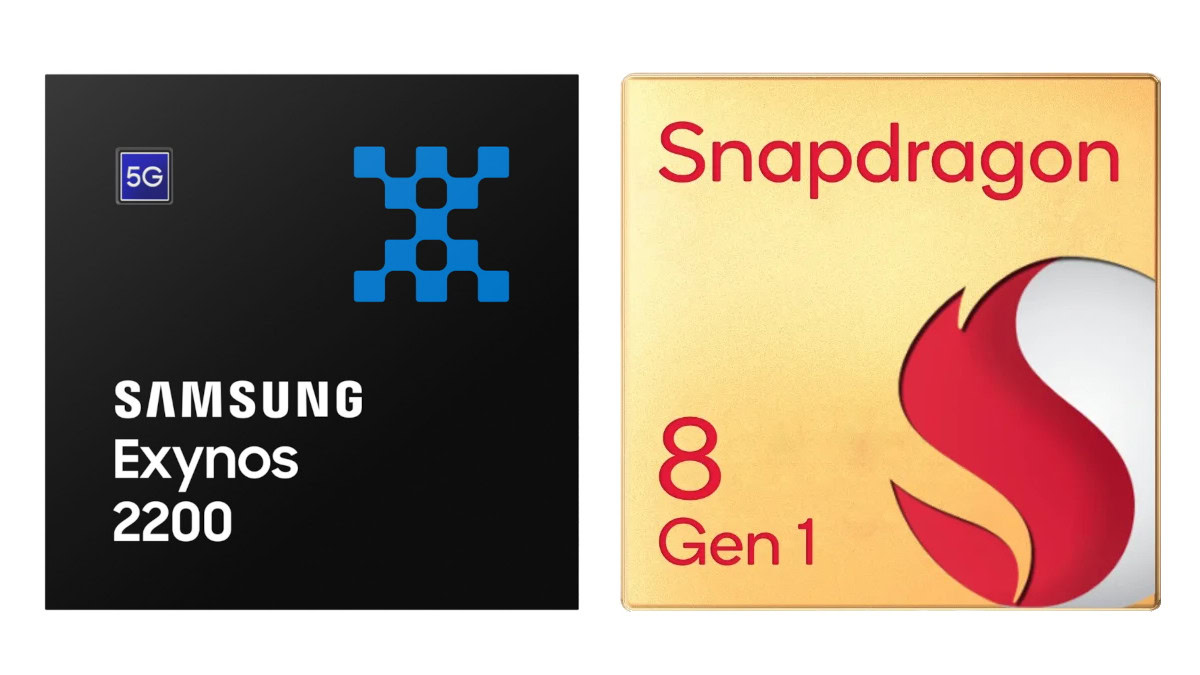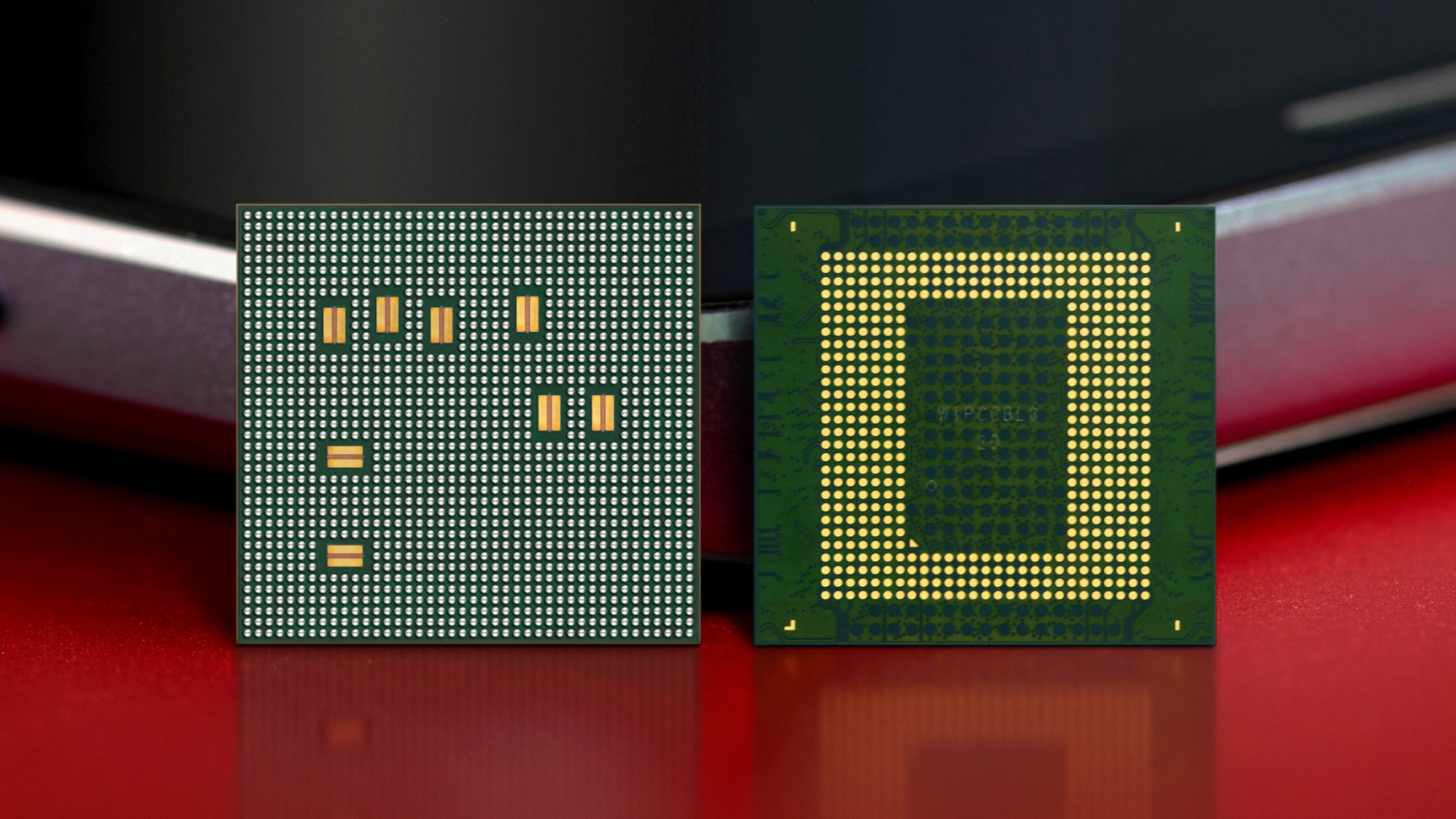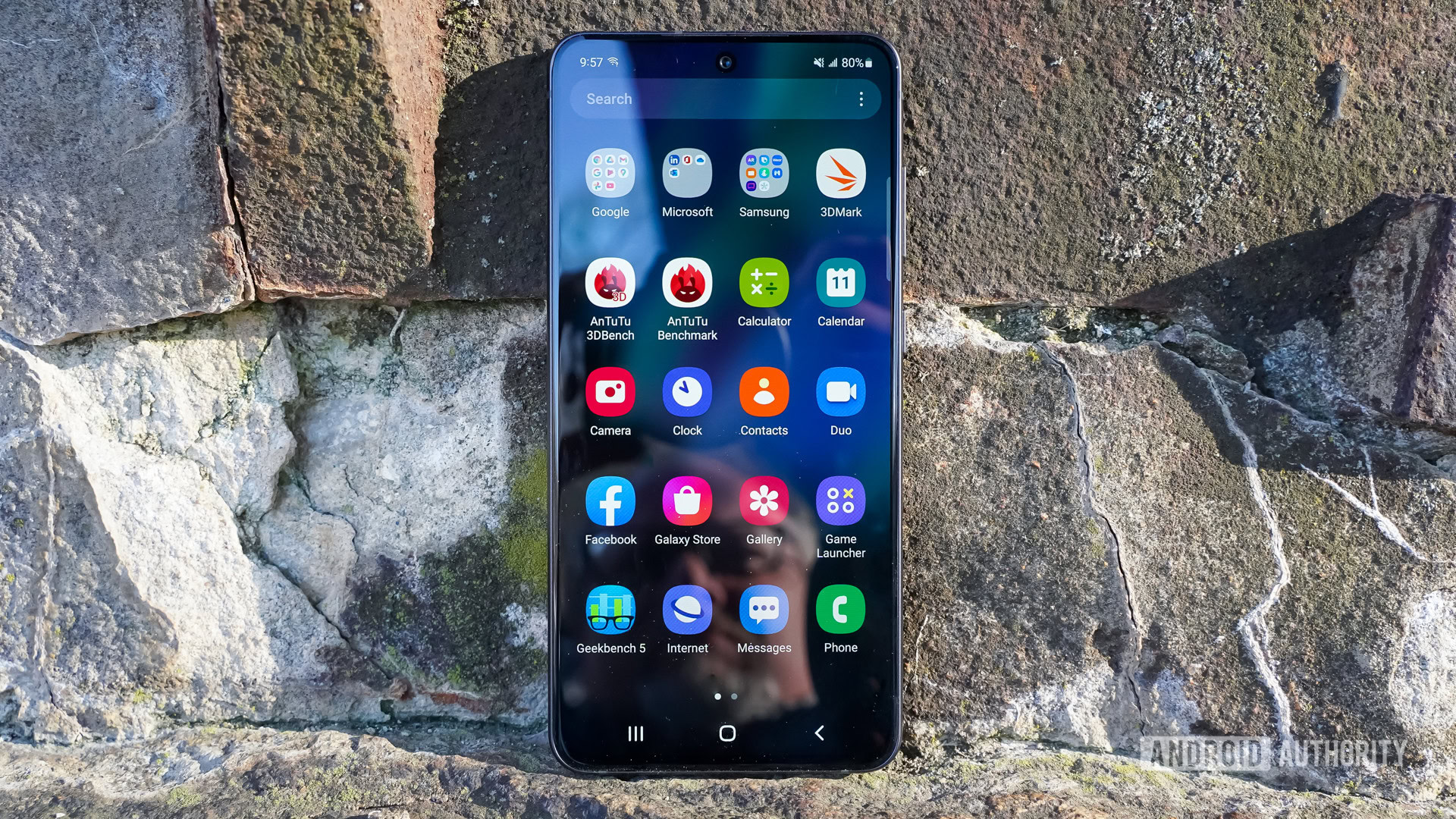Affiliate links on Android Authority may earn us a commission. Learn more.
Snapdragon 8 Gen 1 vs Exynos 2200 vs Dimensity 9000: Next-gen SoC showdown

For the first time in many years, we have varied competition in the flagship SoC segment. Qualcomm’s Snapdragon 8 Gen 1 is rivaled by Samsung’s Exynos 2200 and MediaTek’s Dimensity 9000. You’ll find these premium-tier chipsets powering high-profile smartphone releases throughout 2022. Here’s everything you need to know about who wins in the Snapdragon 8 Gen 1 vs Exynos 2200 vs Dimensity 9000 lineup.
Snapdragon 8 Gen 1 vs Exynos 2200 vs Dimensity 9000 specs
| Qualcomm Snapdragon 8 Gen 1 | Samsung Exynos 2200 | MediaTek Dimensity 9000 | |
|---|---|---|---|
CPU | Qualcomm Snapdragon 8 Gen 1 1x Cortex-X2 @ 3GHz 3x Cortex-A710 @ 2.5GHz 4x Cortex-A510 @ 1.8GHz | Samsung Exynos 2200 1x Cortex-X2 3x Cortex-A710 4x Cortex-A510 | MediaTek Dimensity 9000 1x Cortex-X2 @ 3.05GHz 3x Cortex-A710 @ 2.85GHz 4x Cortex-A510 @ 1.8GHz |
GPU | Qualcomm Snapdragon 8 Gen 1 Adreno | Samsung Exynos 2200 Xclipse 920 AMD RDNA2 cores | MediaTek Dimensity 9000 Arm Mali-G710 MC10 |
Display | Qualcomm Snapdragon 8 Gen 1 144Hz at QHD+ 60Hz at 4K | Samsung Exynos 2200 144Hz at QHD+ 120Hz at 4K | MediaTek Dimensity 9000 180Hz at FHD+ |
Machine learning | Qualcomm Snapdragon 8 Gen 1 Hexagon | Samsung Exynos 2200 Dual-core NPU + DSP | MediaTek Dimensity 9000 APU 5.0 six cores |
Modem | Qualcomm Snapdragon 8 Gen 1 10Gbps download (mmWave) Sub-6GHz speed unknown 3GPP Release 16 5G | Samsung Exynos 2200 7.35Gbps download (mmWave) 5.1Gbps download (sub-6GHz) 3GPP Release 16 5G | MediaTek Dimensity 9000 7Gbps download (sub6GHz) 3GPP Release 16 5G |
Camera | Qualcomm Snapdragon 8 Gen 1 200MP single 64MP+36MP dual 36MP+36MP+36MP triple 8K/30fps HDR recording | Samsung Exynos 2200 200MP single 64MP+36MP dual 8K/30fps, 4K/120fps, 4K HDR recording | MediaTek Dimensity 9000 320MP single 32MP+32MP+32MP triple 8K/24fps recording 4K HDR Video |
Video playback | Qualcomm Snapdragon 8 Gen 1 8K H.264, H.265, VP9 decode | Samsung Exynos 2200 8K AV1, H.264, H.265, VP9 decode | MediaTek Dimensity 9000 8K AV1, H.264, H.265, VP9 decode |
RAM | Qualcomm Snapdragon 8 Gen 1 LPDDR5 | Samsung Exynos 2200 LPDDR5 | MediaTek Dimensity 9000 LPDDR5X |
Connectivity | Qualcomm Snapdragon 8 Gen 1 Bluetooth 5.2 Wi-Fi 6E | Samsung Exynos 2200 | MediaTek Dimensity 9000 Bluetooth 5.3 Wi-Fi 6E |
Process | Qualcomm Snapdragon 8 Gen 1 4nm Samsung | Samsung Exynos 2200 4nm Samsung | MediaTek Dimensity 9000 4nm TSMC |
The spec table above gives us a good overview of the core feature differences between the three chipsets. But let’s dive into a few more of the specifics.
On-paper: Next-gen CPU and GPU performance?
As you’ve probably noticed, all three mobile processors feature Arm’s latest off-the-shelf CPU cores based on the Armv9 architecture. Specifically, these are the powerhouse Arm Cortex-X2, mid-tier Cortex-A710, and power-efficient Cortex-A510. The exception from recent chipset announcements is the Google Tensor, which uses the previous-gen Cortex-X1, A78, and A55 cores based on the Armv8 architecture in a more experimental 2+2+4 configuration. You can read more about how Tensor compares to Snapdragon 8 Gen here.
Given the latest Snapdragon, Exynos, and Dimensity all use the same CPU cores and 1+3+4 layout, you can expect a similar level of performance. However, you may see a couple of benchmark percentage points between them due to clock speed and cache differences, particularly as MediaTek uses the superior TSMC 4nm manufacturing process rather than Samsung 4nm.
Still, the core experiences will likely feel almost identical between all three in the real world. It is also worth noting that MediaTek supports slightly faster LPDDR5X RAM than its competitors, although it will be down to partner devices to make use of this little extra potential.
Far more meaningful differences are found in the graphics department. MediaTek’s Dimensity 9000 is the most well-known quantity, opting for an Arm Mali-G710 MC10 GPU that offers a 30-35% performance boost over the Snapdragon 888. While Qualcomm didn’t talk much about its latest Adreno GPU at launch, we now know that it boasts 30% faster rendering than its previous generation, which should make it a close-run contest between these two.
GPU features and capabilities are set to diverge more than ever this generation, with Samsung introducing hardware-backed ray tracing.
Samsung’s Exynos 2200 offers the most radical change to mobile graphics in generations. The Xclipse 920 GPU sports the same AMD RDNA2 architecture powering the PlayStation 5 and Xbox Series consoles and high-end PC graphics cards. In a major first for mobile, hardware-based ray tracing also finds its way into the Exynos 2200 GPU. However, we’ve not seen many games leverage this technology yet.
Read more: Everything you need to know about smartphone chipsets
Benchmarks: Where does the Exynos 2200 shine?
Based on the above chart, it’s clear that the Exynos 2200 fails to impress on some fronts. The CPU doesn’t outperform its predecessor, for example, and the GPU performance falls short of the competition. And even though benchmarks show a marked improvement over the Snapdragon 888’s GPU, real-world use-cases like gaming will likely not show as much of an improvement.
The Snapdragon 8 Gen 1, meanwhile, tells a similar story at first glance. However, when it’s coupled with active cooling like the RedMagic 7’s built-in cooling fan, the SoC gets a chance to stretch a healthy lead over its predecessor. However, there’s a major caveat here. The Snapdragon 8 Gen 1 tends to run hot, so much so that it cannot maintain its peak performance for more than a few minutes.
In mid-2022, Qualcomm launched the Snapdragon 8 Plus Gen 1 — a mid-cycle refresh of its flagship SoC. In a nutshell, the refreshed chip is being made by a different, more efficient chip fabrication plant than the original, which mitigates the throttling issue and boosts battery life.
Despite the Dimensity 9000’s impressive on-paper specifications, few brands ended up adopting it for their flagship smartphones throughout 2022. The Exynos 2200 powers the Galaxy S22 flagship series in select markets like Europe, the Middle East, and Africa.
Features for flagship phones

These days, the core smartphone experience is dependent on imaging, machine learning, and networking smarts. The Exynos 2200, Snapdragon 8 Gen 1, and Dimensity 9000 are all very robust in these areas too.
For starters, all three boast competitive camera packages. The chips all sport very high-resolution image sensors, simultaneous dual- and triple-camera support, and 8K video recording. However, the Snapdragon 8 Gen 1 is the only one to offer 8K HDR recording and routes an impressive 240 shot burst mode, but it remains a hold-out against AV1 decoder support for video playback.
All three companies also tout enhanced image processing capabilities, tying their AI capabilities closer to the imaging pipeline than ever before. MediaTek notes that this will enable video bokeh and improved noise reduction, while Qualcomm boasts its burst-mode HDR and night shooting capabilities.
While there are critical differences in chipset capabilities, the camera components and software features that smartphone manufacturers pick for their products are likely to be the more significant differentiators.
AI and imaging remain key focuses for all next-gen SoCs.
Speaking of AI performance, all three make some big claims this generation too. Qualcomm has doubled the tensor performance inside its Hexagon DSP, which will produce a significant boost for some workloads. Samsung touts a similar 2x gain in machine learning performance over its previous generation chip. Still, MediaTek’s Dimensity 9000 is the boldest of the bunch with a 4x performance and 4x energy efficiency boost over its last-generation chip.
Where this leaves all these chips in the grand scheme of things is anyone’s guess, as so much machine learning performance is task and smartphone-dependent. But the key takeaway is that all of these chipsets are looking to be on the bleeding edge of mobile AI performance.
One more often overlooked feature that may yield some more unique new use cases in this generation is security. The Snapdragon 8 Gen 1 boasts an all-new Trust Management Engine compliant with Android Ready SE. Similarly, the Exynos 2200 comes withthe an Integrated Secure Element able to verify Root of Trust and verify data held in secure domains. More secure platforms could soon double up as your car keys, driver’s license, and other forms of identification.
Next-generation connectivity, for some

You’ll find familiar 5G specifications amongst all three of these chipsets. 3GPP Release 16 5G compliance is the norm, as download speeds exceed 7Gbps. Qualcomm and Samsung both claim they can hit 10Gbps downloads, but this requires more specific data aggregation scenarios to achieve. For instance, Samsung does this while leveraging a simultaneous 4G and 5G connection, a situation that won’t exist once networks transition to 5G standalone in the future.
MediaTek is still missing a 5G mmWave capabile flagship chip, for now.
Perhaps the most crucial difference between these chips is that MediaTek is the only one not to offer 5G mmWave support, limiting the chipset’s appeal in the US and some other markets.
MediaTek, Samsung, and Qualcomm all support Wi-Fi 6E. However, only the Dimensity offers Bluetooth 5.3 support. Still, Bluetooth 5.2 is plenty for high-end audio, including the LE Audio introduced with Android 13.
Snapdragon 8 Gen 1 vs Exynos 2200 vs Dimensity 9000: The verdict
The 2022 flagship SoC landscape is more diverse than ever, particularly when it comes to the Snapdragon 8 Gen 1 vs Exynos 2200 in the Galaxy S22 series. There’s plenty to be excited about with cutting-edge graphics developments in the Exynos 2200, a highly competitive offering from MediaTek, and Snapdragon doubling down on imaging.
So which one should you pick? That’s a tough question to answer, especially considering the limited regional availability of the Exynos 2200 and Dimensity 9000. If you want the absolute best, however, the Qualcomm chip blazed through our benchmarks. Moreover, the refreshed Snapdragon 8 Plus Gen 1 is easily the most well-rounded premium SoC in the Android smartphone market. So should you pull the trigger and get a Snapdragon 8 Plus Gen 1 phone? Keep reading to find out.
